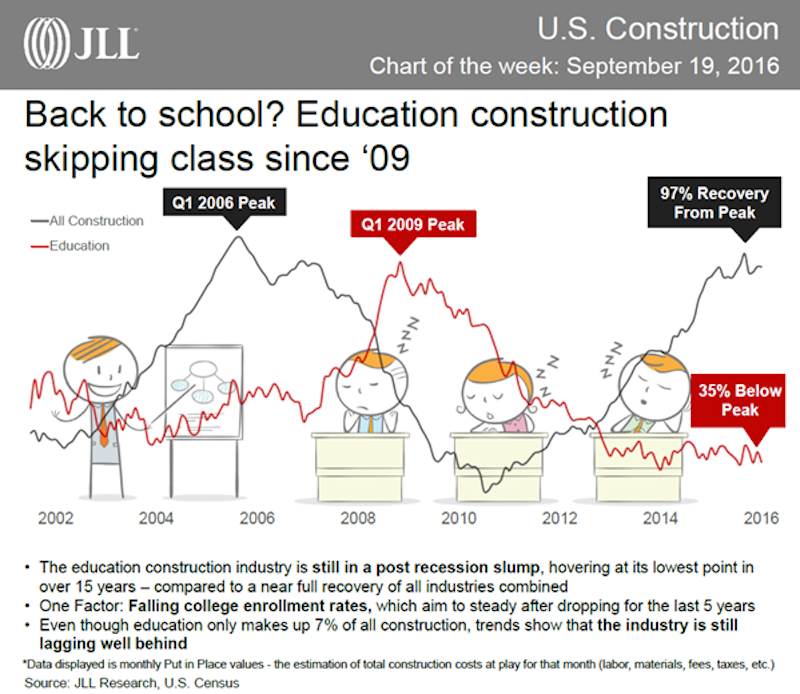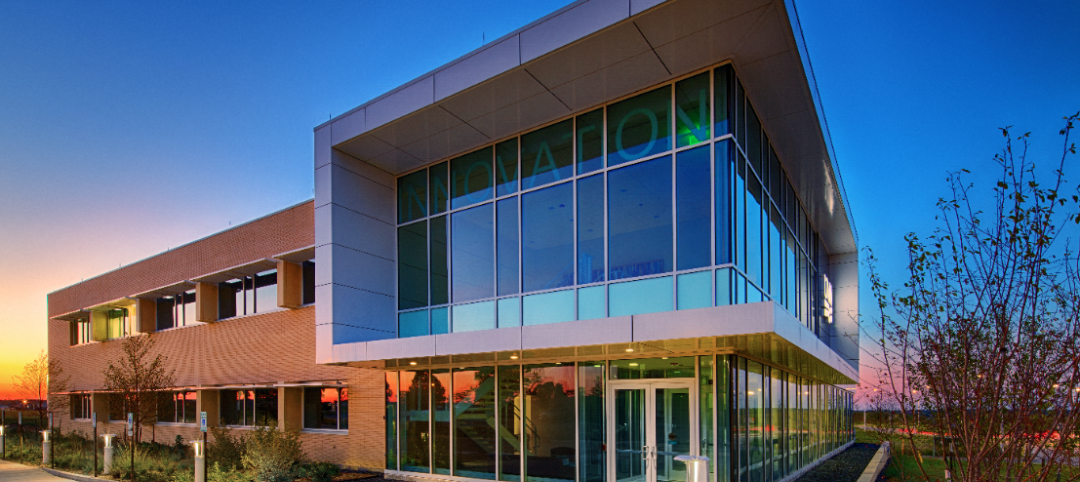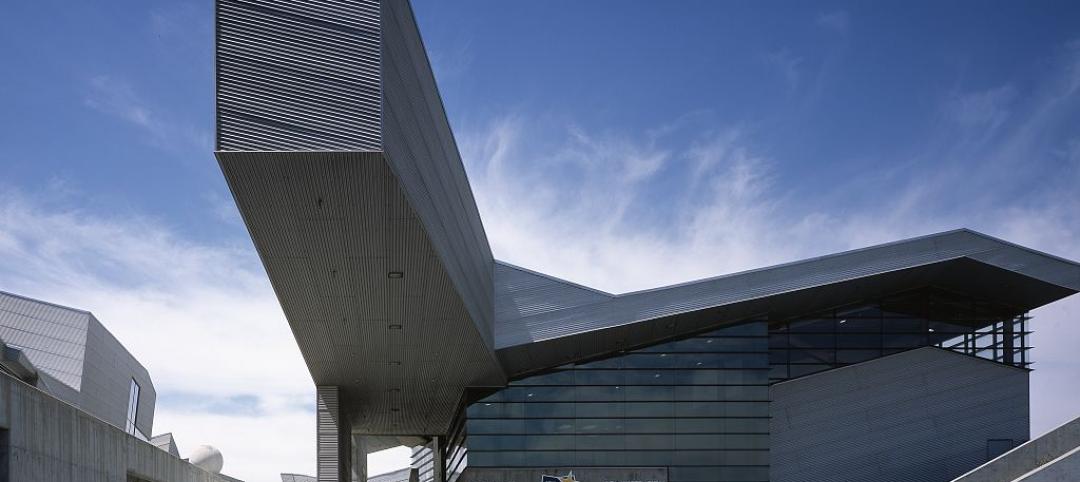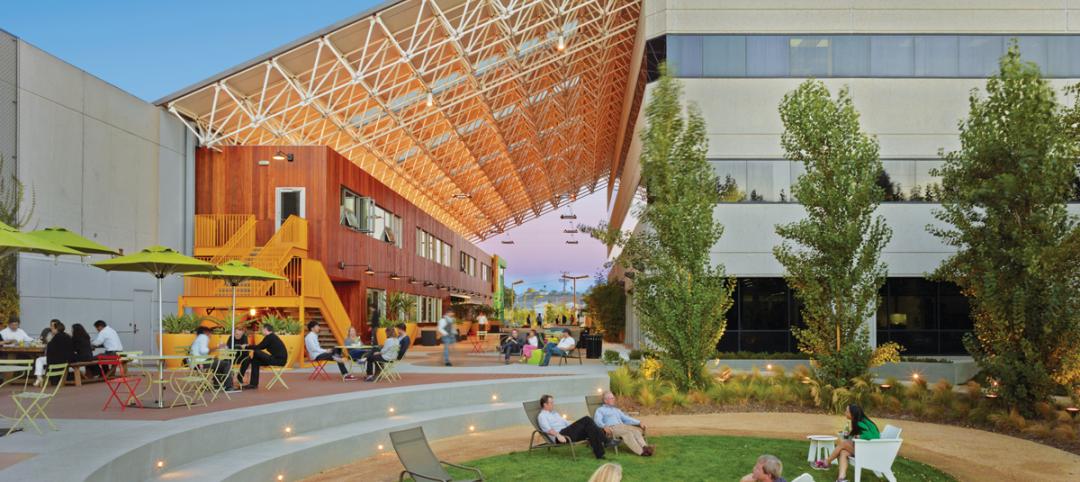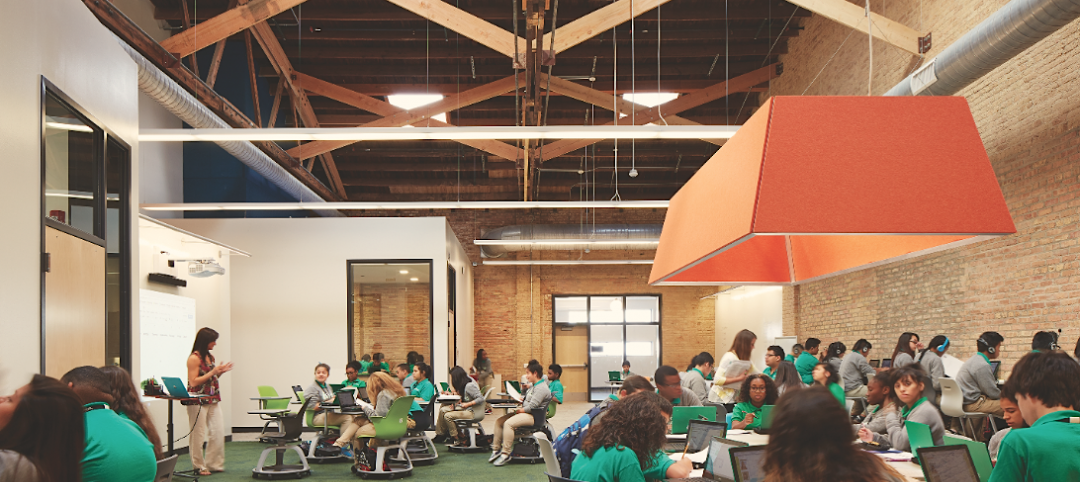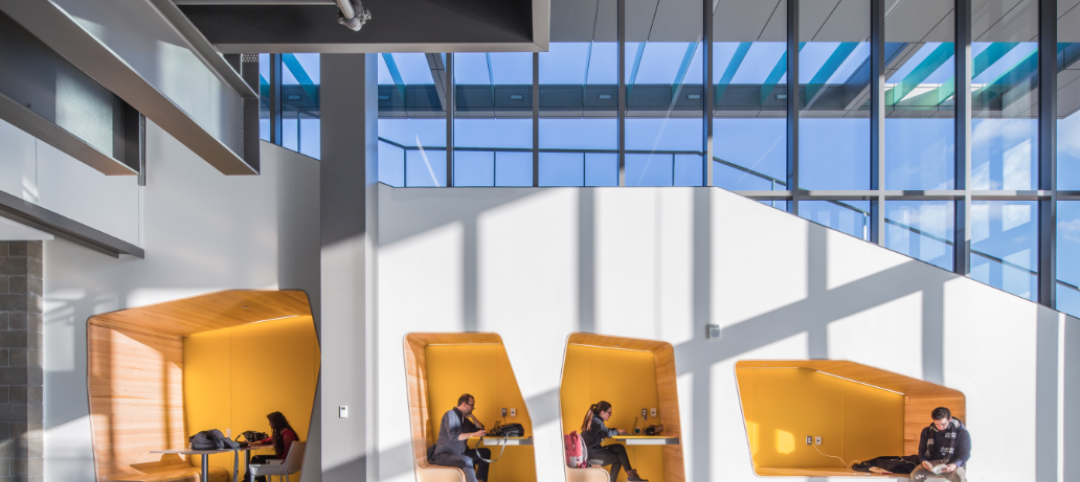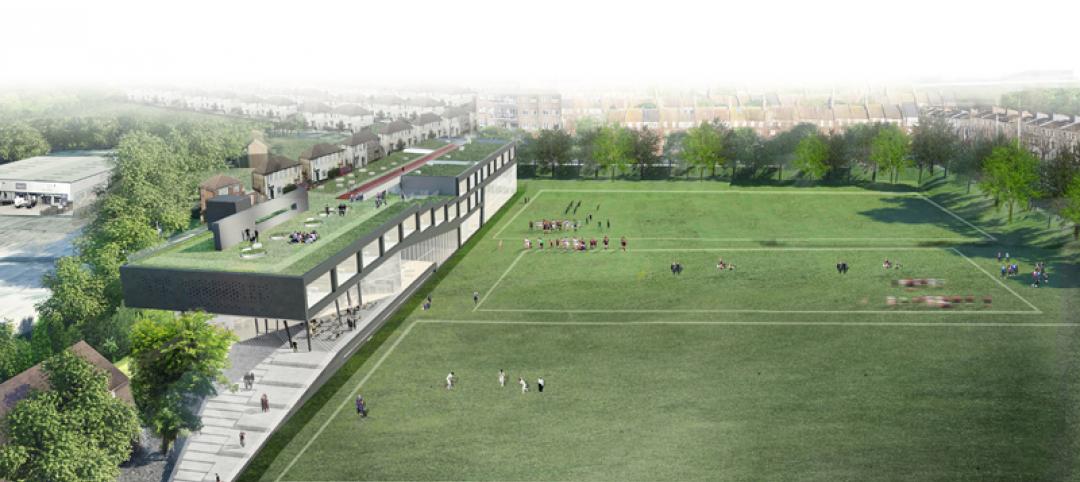Construction investment in the education sector is still in a post-recession slump, even as spending on all construction continues to rise from its low point in early 2011.
The latest “Construction Put in Place” estimates from the Census Bureau show total construction spending in August at $1.142 trillion. That’s a 97% recovery from the most recent spending peak in the first quarter of 2006, and 51.4% higher than the Census estimate for January 2011, $754.7 billion, which was the lowest point for construction during the recession.
The education sector remains one of the biggest in terms of nonresidential construction put in place. But Census’ August 2016 estimate for this sector—$86.1 billion—is still 35% below the peak spending for this sector in the first quarter of 2009.
Indeed, while construction in general has been on the upswing for nearly six years, the education sector has been plummeting from its most recent high of $108.8 billion in May 2009, with a few blips of life in between. Over the past few years, education construction spending has leveled off, though it’s still below the investments in the early and mid 2000s.
Mason Mularoni, JLL’s Project Development and Construction Research Lead, notes that education’s recent peak was mostly stimulated by government funding. “It was almost countercyclical to commercial real estate as the whole.” But in the last several years, government spending has dried up in all but a handful of states (like Texas and California), as school enrollment has fallen off.
“On the demand side, with enrollment flat, state funding has been flat to down,” says Brain Terrell, JLL’s Managing Director and Higher Ed Practice Group Lead.
At the same time, universities find themselves in what Terrell calls a “keeping up with the Joneses” dilemma, where recruiting and retaining students often hinge on the relative quality of a campus’s academic and living facilities and amenities.
To stay in the race, Terrell says more colleges are financing new construction via public-private partnerships, and are leaning toward projects that can produce revenue streams, such as housing, dining, parking and other facilities that might have user fees attached.
Terrell and Mularoni note, too, that education spending is down because many colleges are focused on expanding their graduate school attendance. “So much of undergraduate [learning] can be done online, so why spend more on classrooms?” Terrell says.
A similar dynamic is occurring at the elementary and high school levels, where a growing number of school districts are consolidating schools, and are aligning themselves with teaching pedagogies that incorporate online research into the curriculum. The conventional classroom is giving way to more open collaborative spaces that include outdoor areas.
The question now is whether education construction spending will continue to decline, or if—as data for the past few years show—it will settle at its current level?
Mularoni concedes that the spending peak was probably inflated and unsustainable. “But if you look at the numbers, spending now isn’t that far off from what it was in 2004. We see spending in the future falling somewhere in between these years, because the institutions still say their campuses are in great need of renovation and new construction.”
Related Stories
| Jan 14, 2016
How to succeed with EIFS: exterior insulation and finish systems
This AIA CES Discovery course discusses the six elements of an EIFS wall assembly; common EIFS failures and how to prevent them; and EIFS and sustainability.
Giants 400 | Sep 30, 2015
SCIENCE + TECHNOLOGY SECTOR GIANTS: HDR, Jensen Hughes, Skanska top S+T firm rankings
BD+C's rankings of the nation's largest S+T sector design and construction firms, as reported in the 2015 Giants 300 Report.
University Buildings | Sep 21, 2015
6 lessons in campus planning
For campus planning, focus typically falls on repairing the bricks and mortar without consideration of program priorities. Gensler's Pamela Delphenich offers helpful tips and advice.
Designers | Sep 21, 2015
Can STEAM power the disruptive change needed in education?
Companies need entrepreneurial and creative workers that possess critical thinking skills that allow them to function in collaborative teams. STEAM (science, technology, engineering, arts, and mathematics) education might be the solution.
Education Facilities | Sep 14, 2015
Gehry unveils plan for Children's Institute, Inc. campus in LA
The new facility, which will have rooms for counseling, afterschool activities, and youth programs, will allow CII to expand its services to 5,000 local children and families.
School Construction | Sep 11, 2015
California Legislature expands design-build for schools
Also okays design-build for public works projects over $1 million
Mixed-Use | Aug 26, 2015
Innovation districts + tech clusters: How the ‘open innovation’ era is revitalizing urban cores
In the race for highly coveted tech companies and startups, cities, institutions, and developers are teaming to form innovation hot pockets.
Giants 400 | Aug 7, 2015
K-12 SCHOOL SECTOR GIANTS: To succeed, school design must replicate real-world environments
Whether new or reconstructed, schools must meet new demands that emanate from the real world and rapidly adapt to different instructional and learning modes, according to BD+C's 2015 Giants 300 report.
Giants 400 | Aug 7, 2015
UNIVERSITY SECTOR GIANTS: Collaboration, creativity, technology—hallmarks of today’s campus facilities
At a time when competition for the cream of the student/faculty crop is intensifying, colleges and universities must recognize that students and parents are coming to expect an education environment that foments collaboration, according to BD+C's 2015 Giants 300 report.
University Buildings | Jul 28, 2015
OMA designs terraced sports center for UK's Brighton College
Designs for what will be the biggest construction project in the school’s 170-year history feature a rectangular building at the edge of the school’s playing field. A running track is planned for the building’s roof, while sports facilities will be kept underneath.


